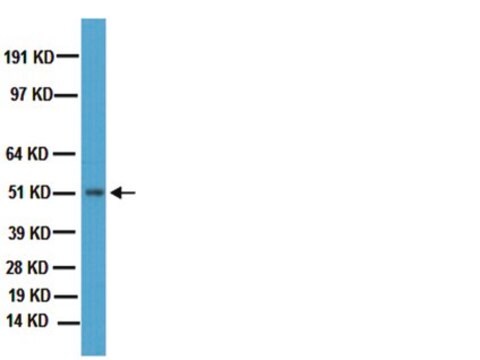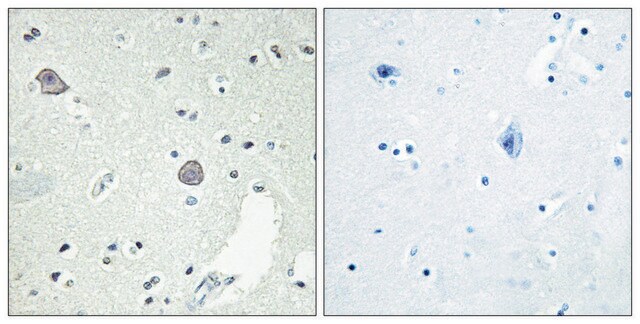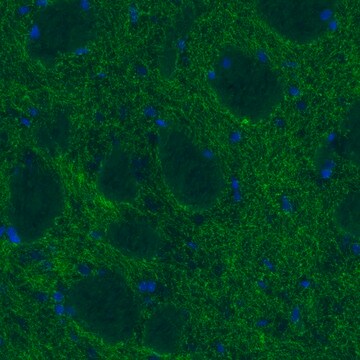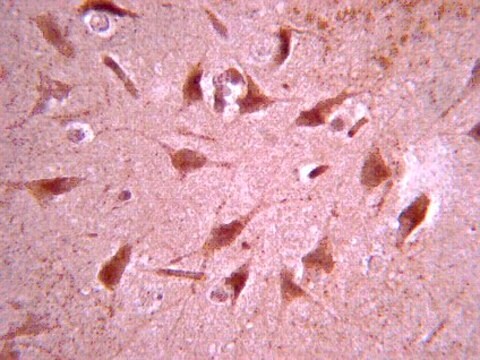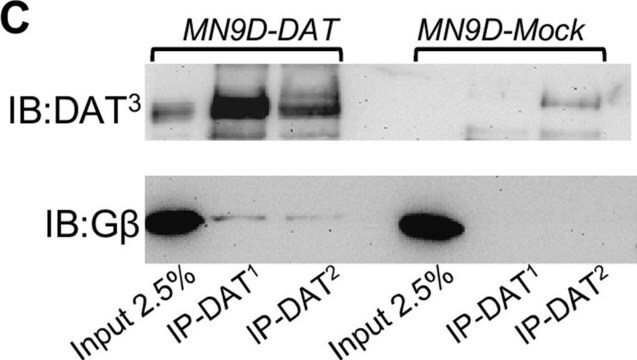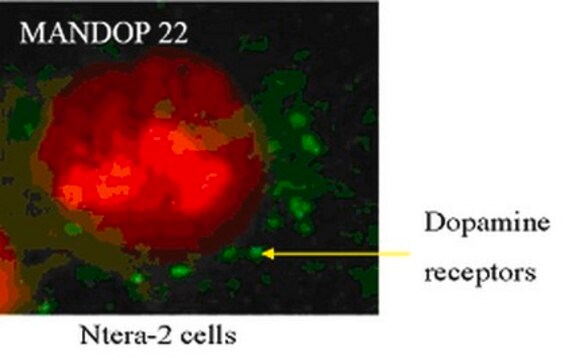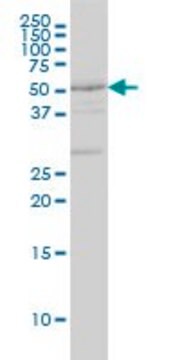D2944
Anti-D1 Dopamine Receptor antibody,Rat monoclonal
clone 1-1-F11 s.E6, purified from hybridoma cell culture
Synonym(e):
Anti-DRD1
About This Item
Empfohlene Produkte
Biologische Quelle
rat
Qualitätsniveau
Konjugat
unconjugated
Antikörperform
purified immunoglobulin
Antikörper-Produkttyp
primary antibodies
Klon
1-1-F11 s.E6, monoclonal
Form
buffered aqueous solution
Mol-Gew.
antigen ~50 kDa
Speziesreaktivität
rat, monkey, human
Konzentration
~1 mg/mL
Methode(n)
immunocytochemistry: 5-10 μg/mL using D1 dopamine receptor transfected HEK-293T cells
immunohistochemistry: suitable
western blot: suitable
Isotyp
IgG2a
UniProt-Hinterlegungsnummer
Versandbedingung
dry ice
Lagertemp.
−20°C
Posttranslationale Modifikation Target
unmodified
Angaben zum Gen
human ... DRD1(1812)
rat ... Drd1a(24316)
Allgemeine Beschreibung
Immunogen
Anwendung
Immunofluorescence (1 paper)
Immunohistochemistry (1 paper)
- immunohistochemistry
- immunoblotting
- immunocytochemistry
- proximity ligation assay
- co-immunoprecipitation
- western blotting
Biochem./physiol. Wirkung
Zielbeschreibung
Physikalische Form
Rechtliche Hinweise
Haftungsausschluss
Sie haben nicht das passende Produkt gefunden?
Probieren Sie unser Produkt-Auswahlhilfe. aus.
Ähnliches Produkt
Lagerklassenschlüssel
12 - Non Combustible Liquids
WGK
WGK 1
Flammpunkt (°F)
Not applicable
Flammpunkt (°C)
Not applicable
Persönliche Schutzausrüstung
Eyeshields, Gloves, multi-purpose combination respirator cartridge (US)
Analysenzertifikate (COA)
Suchen Sie nach Analysenzertifikate (COA), indem Sie die Lot-/Chargennummer des Produkts eingeben. Lot- und Chargennummern sind auf dem Produktetikett hinter den Wörtern ‘Lot’ oder ‘Batch’ (Lot oder Charge) zu finden.
Besitzen Sie dieses Produkt bereits?
In der Dokumentenbibliothek finden Sie die Dokumentation zu den Produkten, die Sie kürzlich erworben haben.
Kunden haben sich ebenfalls angesehen
Unser Team von Wissenschaftlern verfügt über Erfahrung in allen Forschungsbereichen einschließlich Life Science, Materialwissenschaften, chemischer Synthese, Chromatographie, Analytik und vielen mehr..
Setzen Sie sich mit dem technischen Dienst in Verbindung.